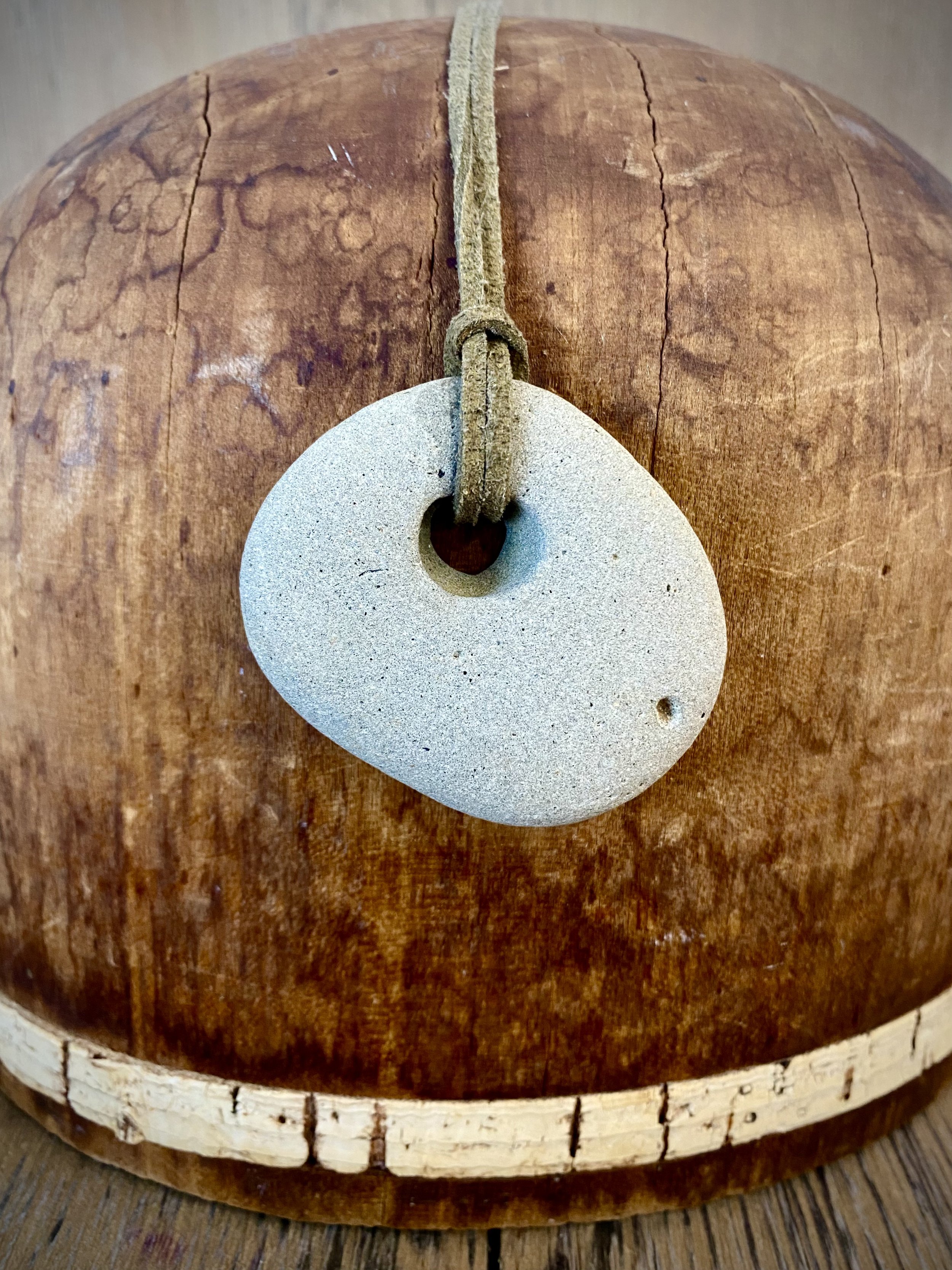 Image 1 of 3
Image 1 of 3

 Image 2 of 3
Image 2 of 3

 Image 3 of 3
Image 3 of 3




Hagstone Pendant
Stones containing natural holes have long been revered for their supposed healing properties. For obvious reasons, they are associated with birth and re-generation. They have also been seen generally as portals into other, supernatural worlds. Large ones (whether natural or carved) have been used in rituals of rebirth and healing in various parts of the world.
Smaller holed stones such as these ones are called “hag stones” (or adder stones) in the British Isles (“Hag” is, of course, an epithet for old women, and referred to traditional healers, or witches, if you prefer.). They were and are carried as talismans of good luck, used to ward off bad vibes, evil spirits, and even nightmares. There’s also a tradition in the British Isles, that one can spy the fae (fairy folk) by peering through a hagstone. It’s certainly worth a try!
These particular hagstones were sculpted by the piddock (aka angelwing) clam, an unusual bivalve mollusk in the family Pholadidae. This remarkable creature has rasp-like ridges or on its shell, which it uses to grind away at clay or rock substrates to create its burrow. The piddock stays in the burrow it digs for its entire eight-year lifespan, with only its siphon exposed to take in the seawater it filters for food. As the sea bed is eroded by winter storms, cobbles and pebbles with piddock-holes may be tossed up on the beach.
This example is from the windswept beaches of Northern California, where surfers, hippies and other beach Bohemians still craft such necklaces for their lovers, sitting beside a driftwood fire in the lingering sunset.
Pendant size 2” x 0.25”
Stones containing natural holes have long been revered for their supposed healing properties. For obvious reasons, they are associated with birth and re-generation. They have also been seen generally as portals into other, supernatural worlds. Large ones (whether natural or carved) have been used in rituals of rebirth and healing in various parts of the world.
Smaller holed stones such as these ones are called “hag stones” (or adder stones) in the British Isles (“Hag” is, of course, an epithet for old women, and referred to traditional healers, or witches, if you prefer.). They were and are carried as talismans of good luck, used to ward off bad vibes, evil spirits, and even nightmares. There’s also a tradition in the British Isles, that one can spy the fae (fairy folk) by peering through a hagstone. It’s certainly worth a try!
These particular hagstones were sculpted by the piddock (aka angelwing) clam, an unusual bivalve mollusk in the family Pholadidae. This remarkable creature has rasp-like ridges or on its shell, which it uses to grind away at clay or rock substrates to create its burrow. The piddock stays in the burrow it digs for its entire eight-year lifespan, with only its siphon exposed to take in the seawater it filters for food. As the sea bed is eroded by winter storms, cobbles and pebbles with piddock-holes may be tossed up on the beach.
This example is from the windswept beaches of Northern California, where surfers, hippies and other beach Bohemians still craft such necklaces for their lovers, sitting beside a driftwood fire in the lingering sunset.
Pendant size 2” x 0.25”